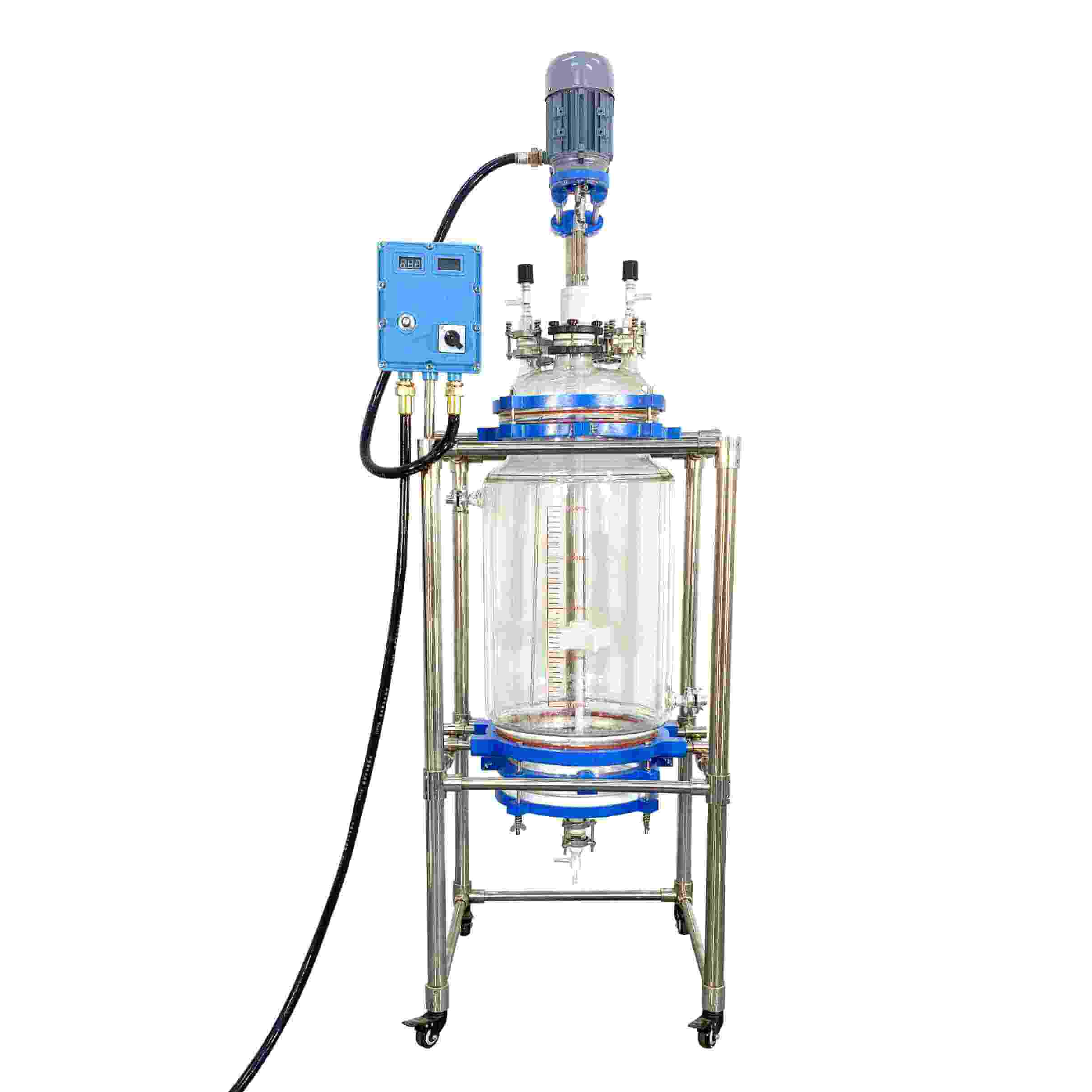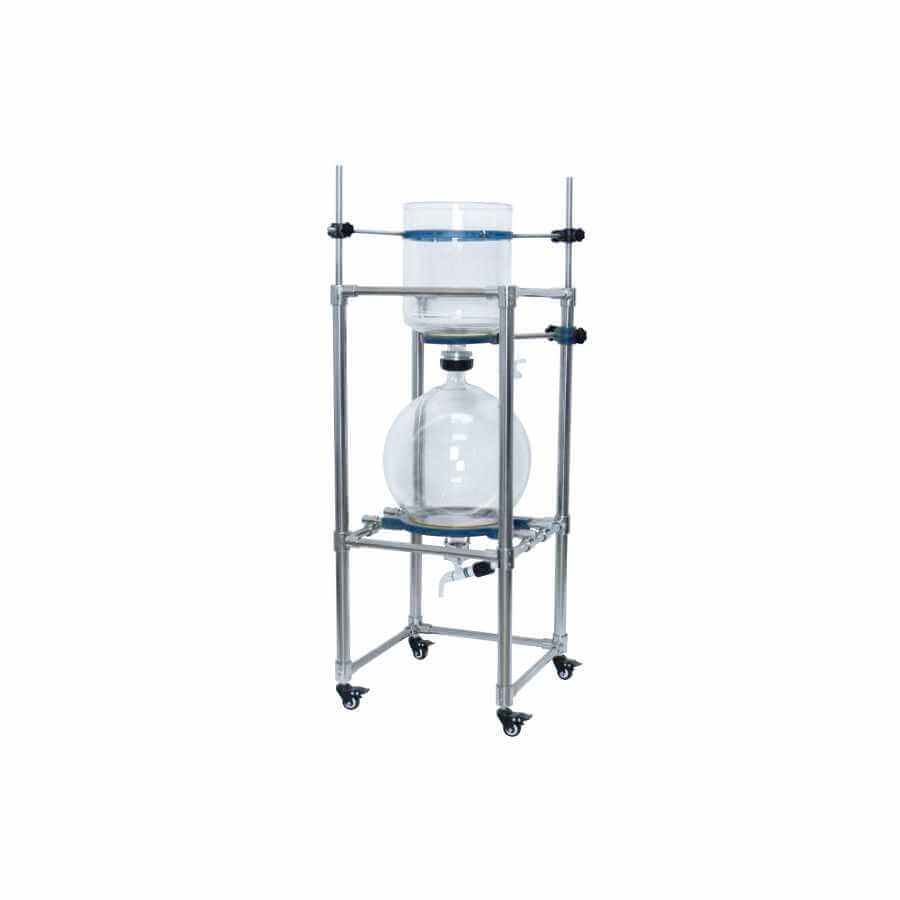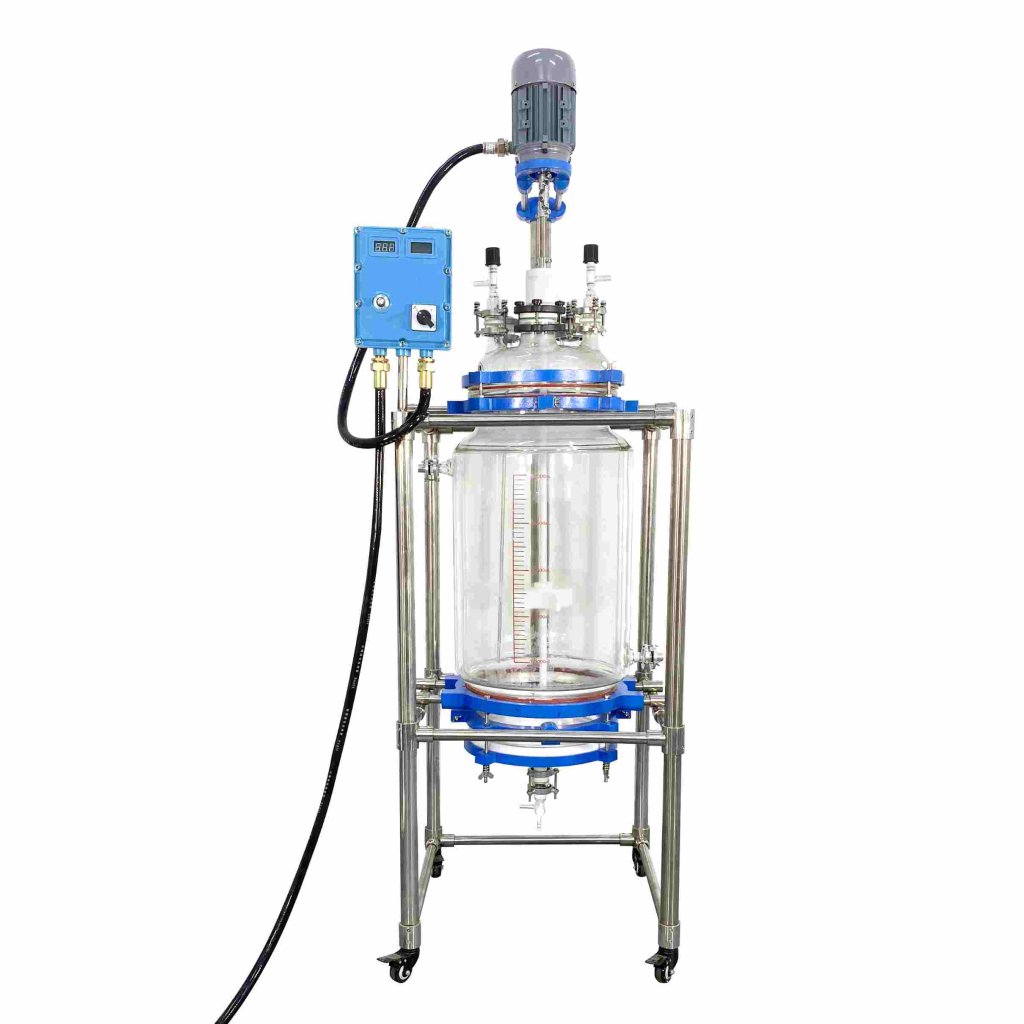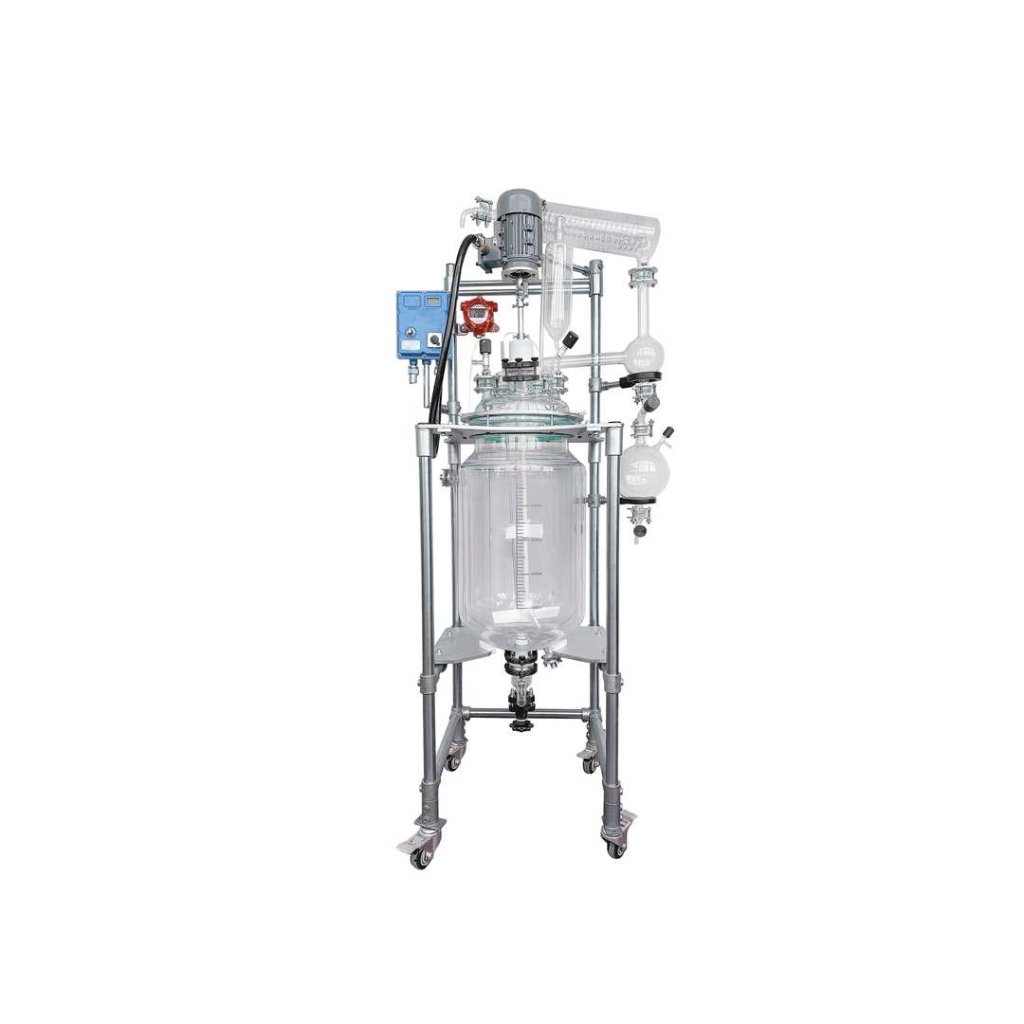

Glass Reactor
Glass reactors: used in chemical reactions, drug research and development, fine chemicals, food manufacturing, and other fields.
Material
glass
Capacity (L)
10-10000+
Mixing system
anchor, paddle, frame and others
Heating system
electric heating, oil heating and others
RUNGYU glass reactors are commonly used biochemical instruments and are widely used in modern fine chemicals, biopharmaceuticals, scientific research and experiments, and other industries. They can be used for concentration, distillation, reflux, separation, and purification reactions under the conditions of constant speed, constant force, and constant temperature. It is an ideal equipment for teaching, experiment, pilot test, and production.
Request a quoteA glass reactor is a device for chemical experiments, its main feature is made of borosilicate glass or other special glass materials and can withstand high temperature and high pressure physical and chemical conditions. However, the use must be correct, and good use can ensure the normal operation of the glass reactor and prolong the service life.

The manufacturing process of glass reactor
1.Selection of glass materials
The glass reactor is made of glass, so glass-making is one of the core steps of the entire manufacturing process. The glass generally used is borosilicate glass or soda-lime glass, which have the characteristics of chemical inertness, acid, and alkali resistance, corrosion resistance, etc., so they are very suitable as materials for chemical laboratory vessels. Glass production requires the glass sheet to be cut to the appropriate size, then melted, stretched or extruded at high temperature, and finally formed into the required glass piece. At the same time, to make the glass reactor more robust and durable, it is also necessary to harden the secondary heating and quenching links so that the physical properties of the glass are further improved.
2.Structural design of glass reactor
The structural design of the glass reactor includes the kettle body, the kettle cover, the interface, the bracket, and other basic components. When designing the kettle body, parameters such as capacity, shape, and size need to be determined according to experimental requirements. At the same time, the position and size of accessories such as kettle covers, interfaces, and thermometers should be determined according to experimental requirements to facilitate the monitoring and control of the reaction process. The weight and stability of the glass reactor must be considered when designing the bracket to ensure that the kettle body will not overturn due to an unstable center of gravity.
3.Processing and manufacturing of glass reactors
The machining and assembly of glass reactors require delicate operations and expertise, including manual operations such as cutting, edging, mating, and chamfering. In the process of processing, it is necessary to pay attention to operating specifications, technical proficiency, and protective measures to ensure the safety and reliability of the processing process and manufacturing accuracy. During the assembly process, it is necessary to accurately calculate and measure the size, position, and angle of each component to ensure that the components of the kettle body can be perfectly mated, and a highly sealed structure can be formed to prevent the leakage of temperature, pressure, and other factors during the reaction process leading to dangerous situations.
4.Heat treatment
Heat treatment is the final procedure in the glass reactor manufacturing process. After heat treatment, the glass reactor can further improve its physical properties, such as compressive strength, impact resistance, high-temperature resistance, etc. During heat treatment, the heating and cooling rates need to be controlled according to parameters such as temperature gradient and time to avoid thermal deformation caused by thermal transparency or rapid cooling of glass parts.

How glass reactors are used
1.Preparation before the experiment
Before the experiment, the glass reactor needs to be cleaned and disinfected to remove dirt and impurities in the kettle to prevent affecting the experimental results. Next, define the experimental objectives and specific experimental procedures, and prepare the required reagents, instruments, equipment, etc.
2.Control and regulation of the experimental process
During the experiment, it needs to be controlled and adjusted according to the parameters of the experiment and the characteristics of the reactants. Such as adjusting the reaction temperature, adding catalysts, stirring reactants, etc. In addition, it is also necessary to pay attention to the safety and effectiveness of the reaction, such as maintaining ventilation in the oxidation reaction to prevent oxygen accumulation and causing safety accidents.
3.Cleaning and maintenance after the experiment
After the experiment, the glass reactor needs to be cleaned and maintained, the reactants and reagents in the kettle need to be cleaned, and the tightness and structure of the kettle should be checked and maintained. In addition, the glass reactor needs to be regularly maintained and repaired to ensure its normal operation and extend its service life.
The manufacturing process of a glass reactor includes steps such as material selection, design, production, assembly, and quality inspection, and its use process needs to pay attention to reaction temperature, material selection, reaction fluid volume, stirring speed, heating rate, and other factors. At the same time, it is necessary to do a good job of inspection and preparation before use, and it is necessary to pay attention to safety during the use of glass reactors, and clean and maintain them in time to extend their service life.




